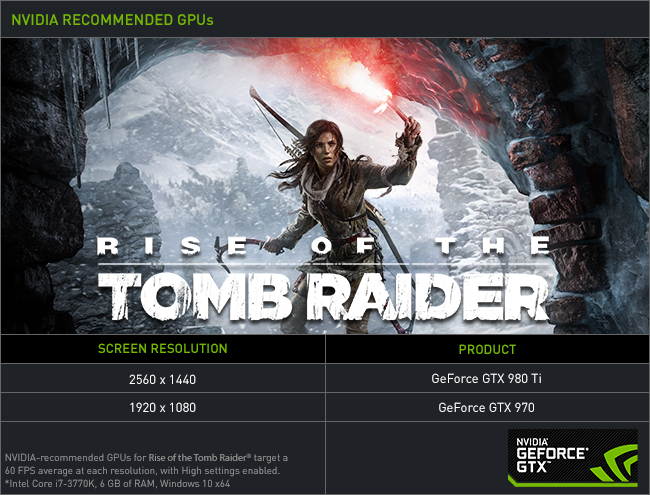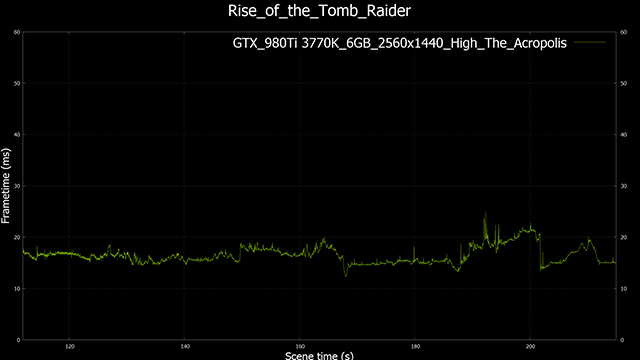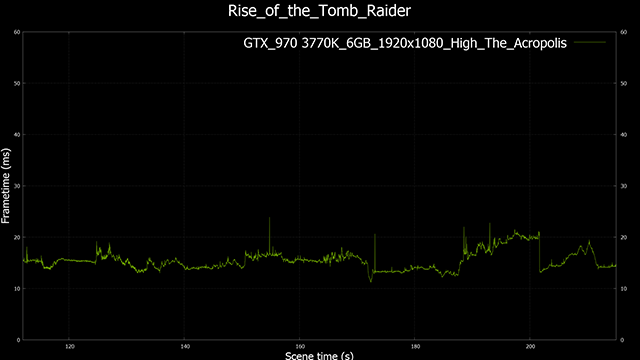The spectacular and critically acclaimed Rise of the Tomb Raider raids Steam and Windows Store libraries on January 28th. Those with a GeForce GTX GPU, our Game Ready driver, and GeForce Experience will receive the definitive gaming experience the second Lara Croft’s latest outing launches, with class-leading hardware, driver optimizations, and GeForce Experience Optimal Playable Settings.
If you’ve yet to gear up for Lara’s latest adventure, which pushes PCs to the limit with advanced graphics, cinematic in-game cutscenes and high octane set pieces, we’ve worked closely with Square Enix and Crystal Dynamics to determine the GeForce GTX GPUs that’ll deliver an experience The Way It’s Meant To Be Played.

To determine the recommended NVIDIA graphics card, Square Enix and Crystal Dynamics leveraged our experienced team of testers, who located a 2-minute repeatable segment of the expansive game that was graphically demanding and representative of the other graphically intensive moments of the game.
With further testing, our technical marketing team concluded that a 60 frames per second average during this particularly demanding scene, on the High-detail preset, delivered the best balance between graphical fidelity, input responsiveness, and performance in all of Rise of the Tomb Raider’s gameplay locations and cutscenes.
An average framerate of 60 or above is an excellent indicator of overall performance, but it gives you little idea of how the game 'felt'. Was the experience stuttering? Were there momentary stalls? And did some moments of the game run at a much lower framerate? To discover the answers to those questions we need to instead examine frametimes, the length of time it takes a GPU to render each frame of gameplay.
Indicators of an undesirable, unpleasant experience include frequent split-second spikes, especially above 33.3 milliseconds (30 FPS and below), non-stop spikes that jump between low and far higher frametimes, and portions of gameplay that are above 33.3 milliseconds for more than a mere moment. To learn more, check out this pioneering press article.
In our Rise of the Tomb Raider test there are only a few momentary spikes, and none above 25 milliseconds, there are no periods of spiking between low and high frametimes, almost all of the benchmark is below 20 milliseconds, and much of it is at, around or below 16.6 millisecond, the 60 FPS sweet spot. In other words, the GeForce GTX 970 not only delivers a High level of graphical fidelity at over 60 frames per second, it's also super smooth with no stuttering or stalls, giving you a fluid, responsive gaming experience.
For a similarly smooth 2560x1440, High detail, 60 FPS Rise of the Tomb Raider experience, step up to a GeForce GTX 980 Ti.

In addition to giving you the performance to play Rise of the Tomb Raider, the recommended GeForce GTX 970 and GeForce GTX 980 Ti graphics cards support our vast array of critically acclaimed technologies, giving you the definitive gaming experience, unmatched by any other platform. And with GeForce Experience’s ShadowPlay you can capture and share breathtaking, high-fidelity moments with your friends with ease.
Also courtesy of GeForce Experience, all NVIDIA GPU users will automatically receive Optimal Playable Settings for Rise of the Tomb Raider, instantly giving gamers optimized settings that ensure a smooth experience on their system.
With our Optimal Playable Settings, Game Ready drivers, and technologies like G-SYNC, the definitive Rise of the Tomb Raider experience will be on GeForce GTX PCs. If you do need or desire an upgrade to attain this experience, the GeForce GTX 970 and GeForce GTX 980 Ti are currently bundled with a free copy of Rise of the Tomb Raider.
For the complete lowdown on Rise of the Tomb Raider be sure to visit GeForce.com on January 28th for our Rise of the Tomb Raider Graphics & Performance Guide.



